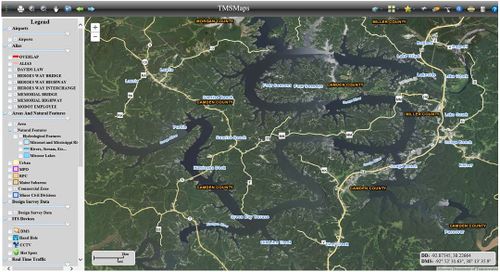Category:145 Transportation Management Systems (TMS)

When Transportation Management Systems (TMS) (MoDOT access only) was implemented in 1998, it only presented information for travelways (routes), safety, traffic and pavement. TMS is now comprised of client/server applications, web-based applications, Cognos/ Crystal Reports and ArcGis tools and products. Over the years, the number of applications, reports and mapping products has exploded. There is also a component that allows for the addition of photos and documents related to certain inventory items.
External users can access TMS data using the Datazone